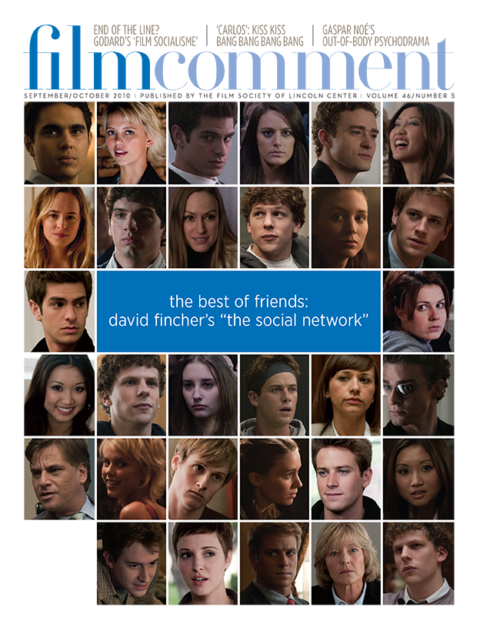
In the opening moments of Bright Star, a blade pushes through the surface of some coarse material. For a second, the prospect of a Campion-esque act of violence hovers—the kind that hacks into her film’s romantic fantasies, proving lethal to women and hardly less toxic to men. For a second, you might see the ice skates slicing the legs off Frannie’s mother in In the Cut, or the blade of the axe sweeping down on Ada’s finger in The Piano. Then the camera readjusts—it isn’t a knife, but a needle making determinedly neat stitches in a piece of linen. The shot is an introduction to Fanny Brawne, whose love affair with John Keats is the subject of Campion’s new film. But most striking in Bright Star is the absence of the violent passions that one might expect from a tale of a couple divided by poverty and poetry.
If the iconic image of Romantic art is a storm-tossed boat, the cinematography here evokes the tranquility of a 17th-century Dutch painting. In the first image of Fanny (Abbie Cornish), seated by the window sewing in the early morning, she might almost be one of Vermeer’s women, serenely absorbed in domesticity, the exquisite composition sharing the painter’s fascination with natural light and space. Through much of the film, Fanny seems to have stepped off a canvas, an effect heightened by the way she is continually posed in the frames of doorways, windows, and mirrors, the colors in her outfits harmonizing foreground and background. After a while such relentless beauty becomes oppressive. The prevalence of mirrors hints at something self-satisfied about this symmetry and one begins to feel that the “very well-stitched Miss Brawne” (as Keats’s friend Charles Brown introduces her) might do better for being shaken out of these graceful compositions.
Bright Star is a film about interiors, alternating between Fanny’s sunlit rooms and the dark, disorderly places where Keats (Ben Whishaw) and Brown (Paul Schneider) struggle with the interior imagination. One could see it as the story of a woman’s coming of age, the necessary passage of Fanny from the safe prettiness of her maiden chambers towards the intimacy with suffering that she finds through her relationship with Keats. When first entering the poet’s room, Fanny literally loses her balance—and maybe she needs to.

It’s equally tempting to read Bright Star as a reflection on the gendered politics of art—Fanny is forever trying to get into the room where men are working on their poetry and forever getting pushed out. Fanny, Brown, and Keats form the familiar triangle of a woman and two men that is a staple of romantic drama, but here the object of desire is not a woman. It’s Keats whom Fanny and Brown are chasing, an appropriate inversion for a poet that scholar Anne Mellor described as an “ideological cross-dresser.” What Fanny and Brown seek, however, isn’t just love. In the film’s most romantic scene, Brown reaches for Keats’s hand, but it is his devotion to his friend’s writing—“the finest thing in my life”—that Brown wants to profess. This is a film relatively uninterested in gender or sexual politics, and intensely interested in the nature of art.
It is perhaps no coincidence that in our first view of Fanny, she has what Keats longs for. When the poet describes his ideal situation in a letter to her, he imagines himself in a still life, seated by a “painted window” reading “like a picture of someone reading.” Fanny and Keats could almost be allegorical figures of painting and poetry, returning us to a time-honored debate about the sister arts. The first exchanges between them are all about this question of art—the relative value of his poetry and her needlework. As Fanny tartly points out to Keats and Brown, her “stitching has more merit and admirers than your two scribblings put together” and—the final thrust—“I can make money from it.” If the joke is initially on Fanny, mocked by Brown for her “enslavement to fashion,” the joke is also on us, for poetry, no less than needlework, is dependent on the vagaries of fashion. As Bright Star is careful to point out, Keats’s poetry was decidedly out of favor during his lifetime, the subject of vituperative reviews. And for all the attempts by Romantic poets to elevate their art above a mere craft, when Fanny asks Keats for instruction in poetry and Keats denies that it can be learned, you can hear legions of schoolchildren laughing hollowly: there can be few Romantic artists more studied in school than John Keats.
It wasn’t so long ago that film, too, was considered a mere craft. Critics who advocated for film as the seventh art borrowed many of their arguments from the Romantics. Campion is well suited to revisit this debate and not just because she is one of the few female directors to be considered an Artist in the Romantic sense. Rather, as someone trained in painting and experienced as a writer, she shows us here the beautiful sanctuaries that word and image create together, and the reasons why life requires us—like Fanny—to abandon them.








